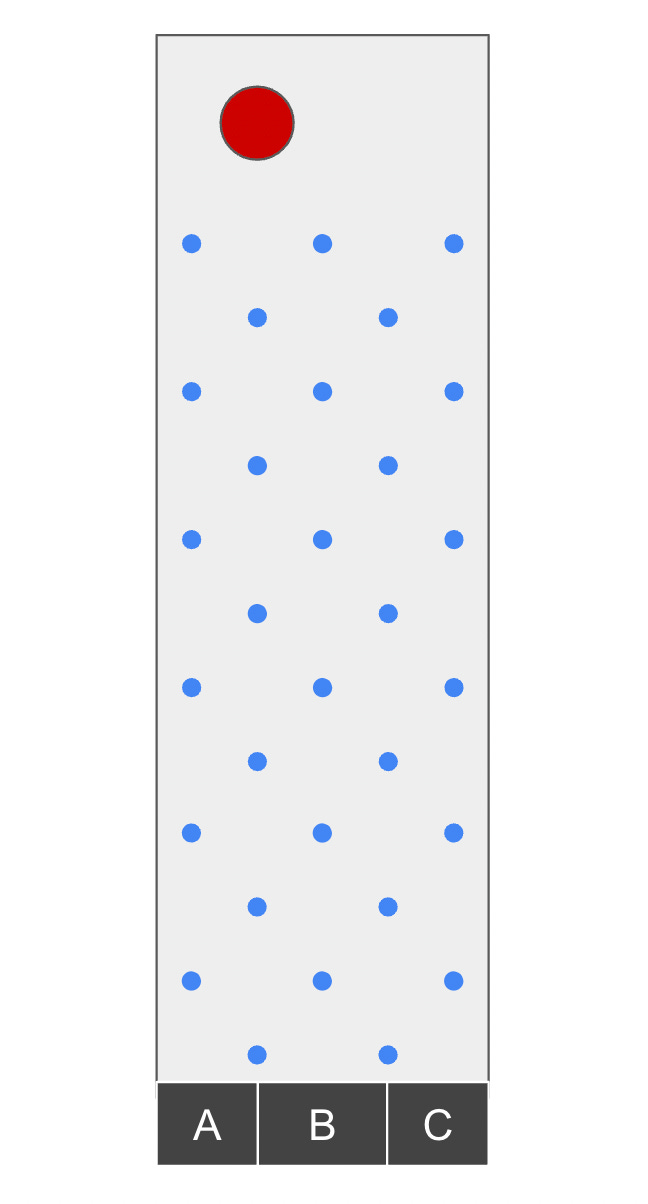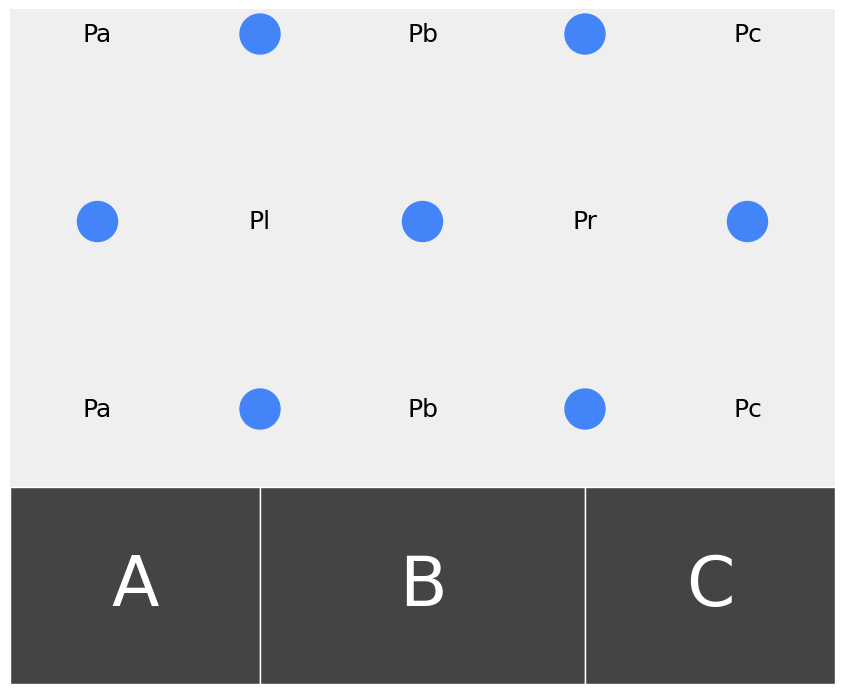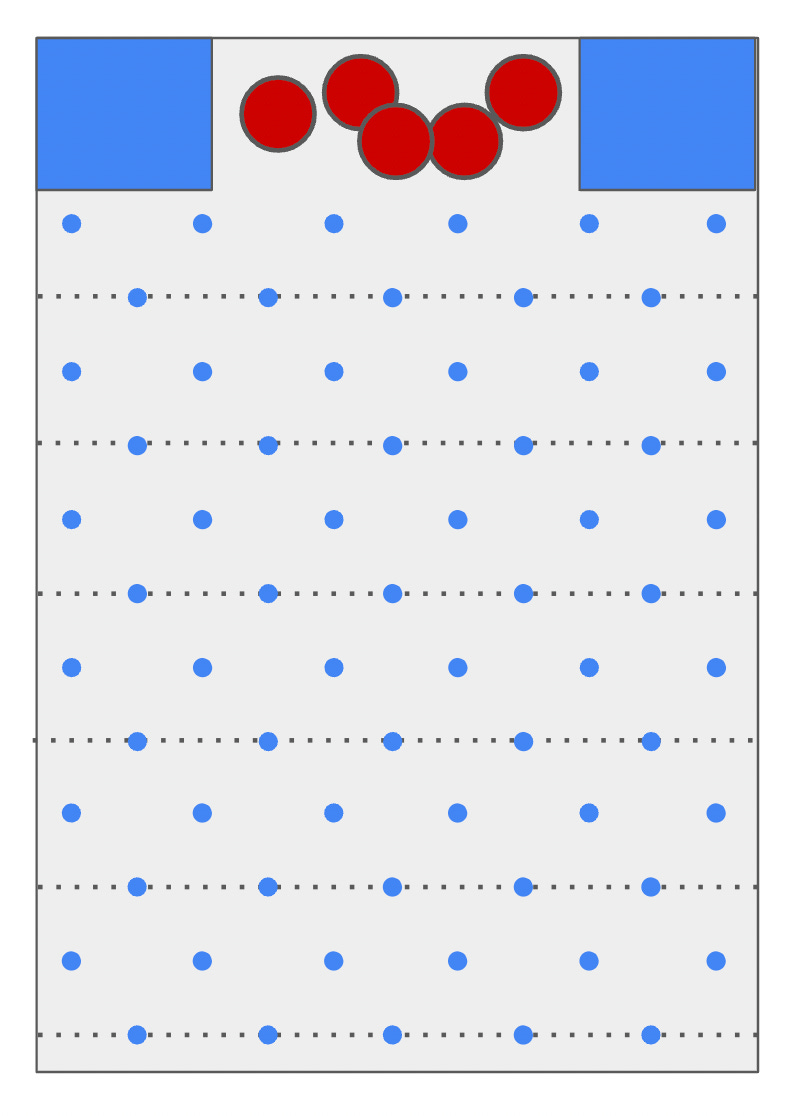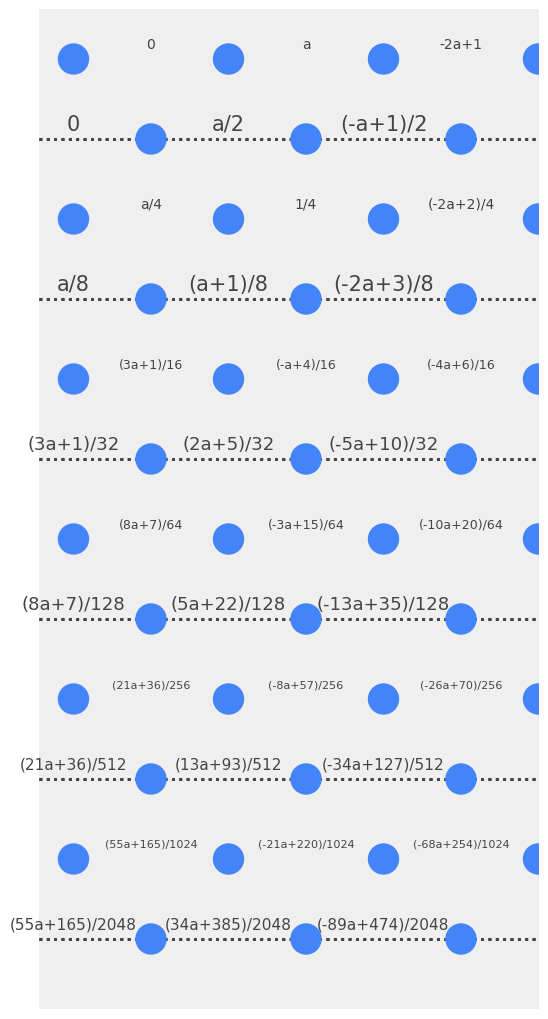Can You Break the Bell Curve?¶
Fiddler¶
Bean machines can famously produce bell-shaped curves. But today, we’re going to change all that!
Suppose you have a board like the one shown below. The board’s topmost row has three pins (and two slots for a ball to pass through), while the bottommost row has two pins (and three slots for a ball to pass through). The remaining rows alternate between having three pins and two pins.
But instead of the 12 rows of pins in the illustrative diagram, suppose the board has many, many rows. And at the very bottom of the board, just below the two bottommost pins, are three buckets, labeled A, B, and C from left to right.

Whenever a ball encounters one of the leftmost pins, it travels down the right side of it to the next row. And whenever a ball encounters one of the rightmost pins, it travels down the left side of it to the next row.
But this isn’t your garden variety bean machine. Whenever a ball encounters any of the other pins, it has a 75 percent chance of traveling down the right side of that pin, and a 25 percent chance of traveling down the left side of that pin.
A single ball is about to be dropped into the left slot at the top of the board. What is the probability that the ball ultimately lands in bucket A, the leftmost slot at the bottom?


